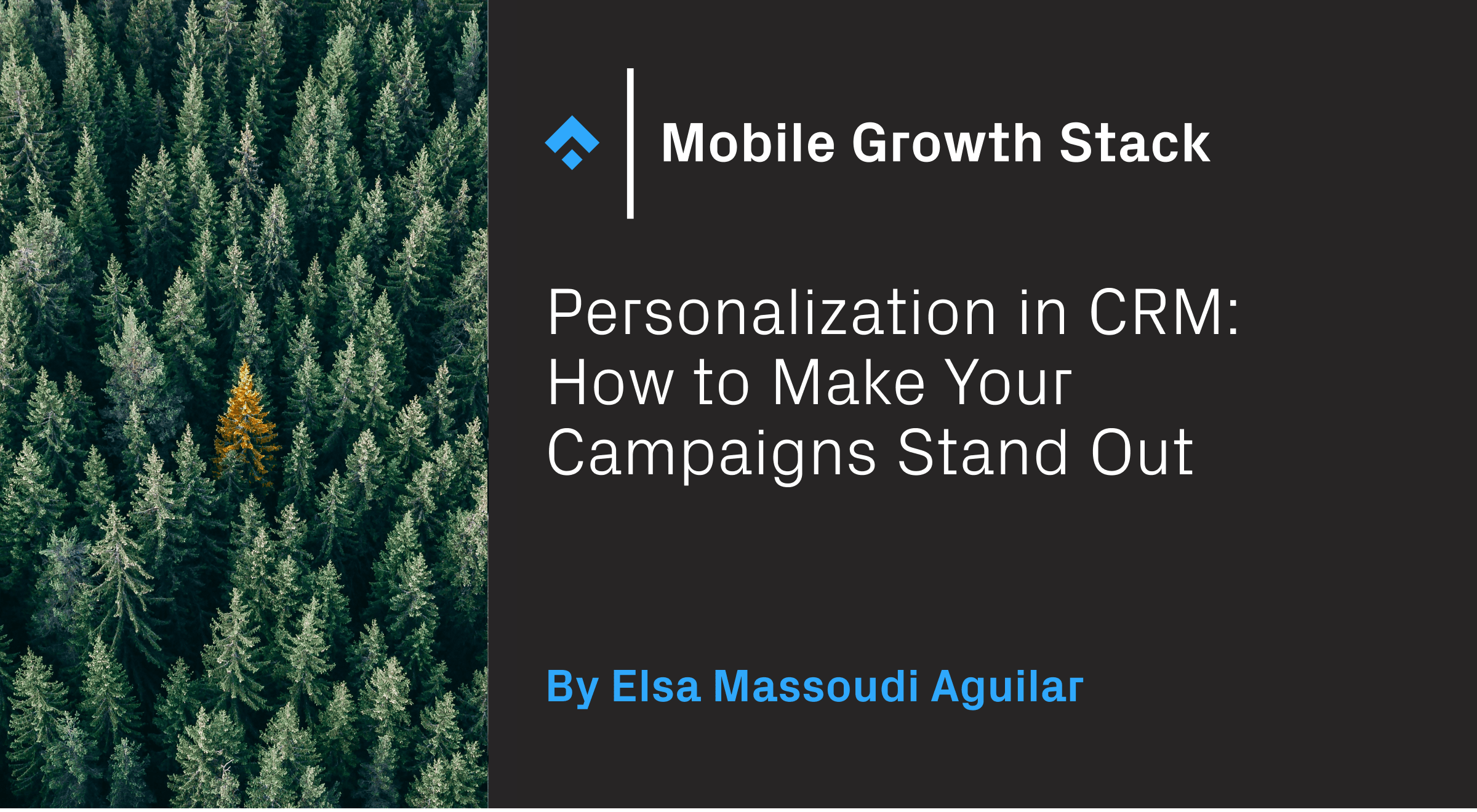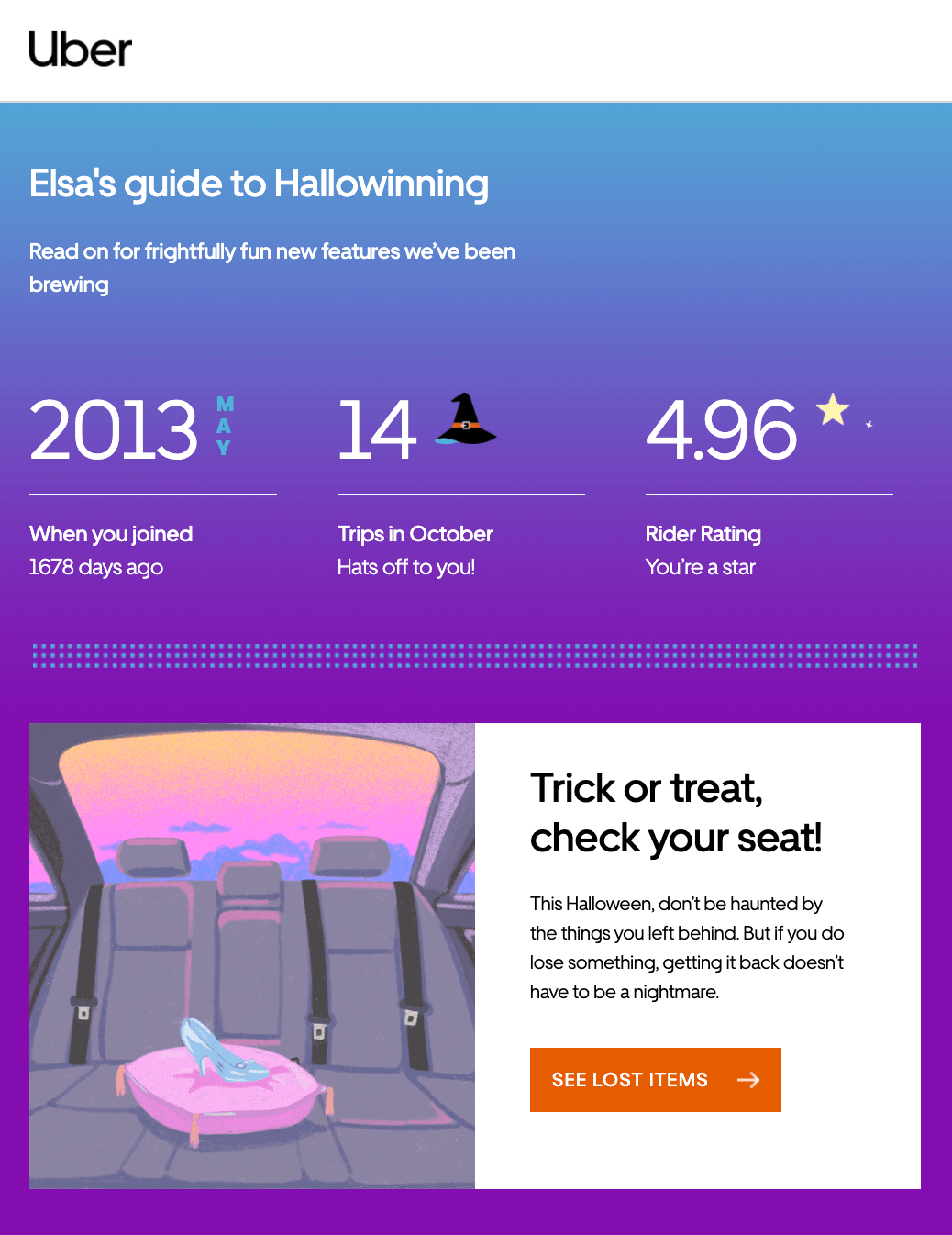
Editor’s note: This is a guest post from Elsa Massoudi Aguilar. Elsa is a CRM Team Lead at Taxfix. Originally from Spain, she has more than six years of experience in marketing, having fully specialized in CRM almost since the beginning of her career. Before her role at Taxfix, she has worked for different companies such as Omio (formerly GoEuro), EuroOne or Adviqo GmbH.
Open your inbox right now and take a glance at all of the campaigns you get from your subscriptions. How many of these are personalized? In other words, tailored to you? The answer is probably not many.
Day in day out, users continue to be exposed to generic campaigns based on the assumption that a whole user base is interested in the same products and news. That has a lot to do, in turn, with the concept of a newsletter: if we look back just a few years ago, CRM marketing was basically synonymous with newsletters only. The newsletter is, by definition, a generic campaign sent to all of the user base. I don’t wish to argue that newsletters are bad—not at all. But they serve specific needs, and aren’t characterized by their level of personalization. Quite the opposite, in fact: they’re one-size-fits-all.
The simple truth is this: to make your campaign stand out, you have to personalize it to the user base you’re sending it to. This may sound like an obvious thing to say—but the word personalization itself tends to mean different things to different people. I always find it interesting to hear what people define it as. Some people tend to think that personalization in CRM is about the messaging (for example, the content of an email); others think it may refer just to specifically targeted campaigns that you send to your user.
Personalization is actually much more than that. As I explore in this article, personalization can also refer to the timing of a campaign, the channel selection, or the audience, among other variables. To ensure a successful customer experience, as CRM managers, we need to send the right message to the right person at the right timing with the right channel. That is personalization.

A great example of a personalized campaign from YouTube, summarizing yearly accomplishments.
Why should I personalize my CRM?
If CRM communications are personalized based on each user’s interests, demographic attributes, and behavior in the app/website, the chances that the user is going to find your communications interesting are way higher. Why? Nowadays, all of us are exposed to a huge amount of marketing campaigns of all sorts—performance marketing, CRM, offline, TV, and more—constantly. We all see and interact with marketing campaigns daily, often without even realizing it.
This constant stream of advertising means all of us are overloaded. We’ve all learned how to not pay attention to ads in general, especially when we receive around 50 email campaigns in our inbox every day. Why would we open them? First of all, we don’t have time for that. Second of all, every time we do open those emails, they’re totally irrelevant. It’s almost as if we’ve developed a Pavlovian reaction to bad marketing campaigns, which are often also, frankly speaking, a waste of time.
For all of these reasons, personalization is the only factor that can make a difference here. By standing out from all the other campaigns, users are being exposed to your brand by sending them relevant content that makes them open your campaign and engage with it. At a very basic psychological level, when an email is directly addressed and tailored to a particular user, they’re more inclined to trust and interact with it as they would any other email directly addressed to them. It hits a different part of the brain.
How can I personalize my CRM?
People tend to think that personalization is all about messaging. Truthfully, there’s much more to it than just that.
Firstly, it’s important to acknowledge the role of segmentation. In fact, it’s probably the first step every CRM manager should take when starting to work on a campaign. Why? Defining segments will help you understand the different audiences within the user base and identifying what needs each of them has. Based on that, you’ll be able to define how each segment should be treated and proceed to create/request content, creatives, and designs that work accordingly to each of them in order to maximize their conversion and performance.
After that, I think it’s really worthwhile to think about the following four elements in conjunction with one another:
- Timing
- Channels
- Audience
- Campaigns
Let’s start with timing. Take the following example: as a CRM manager, you’re analyzing a campaign’s engagement and realize that specific segments of users are engaging more during the afternoon, while some other audiences are engaging way better during the early morning. You then personalize your campaign timing based on your audience.
The same can happen with CRM channels. Some users might be more receptive to push notifications, while others tend to open emails. You even have another segment of users that might prefer other channels such as web push. A good CRM manager will be able to identify what channel is best for each user; it doesn’t make sense to overload them with campaigns across all the different channels. This is an example of great personalization based on channels.
Audience is an equally important variable. At Taxfix, for example, we focus on personalization to provide a successful customer experience. As a fin-tech company that offers tax returns services as the main product, we understand that we need to assess the needs of our customers differently given that tax information can vary a lot depending on who you are. A user who is married and has kids has totally different needs than, let’s say, a user that is unemployed and single. On top of that, people have a lot of uncertainty about taxes during normal periods, let alone during the pandemic, which has seen plenty of our users change their profession or adapt to another employment method. What we need to assess is their doubts are at the current moment in a really personalized way.
Because of that, we’ve become even more customer-centric in our recent campaigns, which leads me to my final point about personalization. As CRM managers, we have to understand what situations our users are living in, creating the right kind of campaign to communicate with our users in a way that matters to them—personally and sympathetically. We have to help them understand what next steps are needed at any given moment.
Imagine if we were sending pages and pages about all the tax information and use cases to all our users irrespective of who they were, or their specific labor situations. Our users would never open those emails. But imagine creating a targeted campaign to address the exact needs of someone who has just lost his job, or somebody who is about to switch tax class. The difference is immense.
How much is too much personalization?
Despite all the benefits of personalization, you have to keep in mind one thing: there’s a very fine line between personalization and creepiness. We all know that in CRM platforms, there can be a lot of information stored about the user base. It’s very important to know how to use it, especially nowadays, when awareness and concerns about data privacy have only increased.
Let me illustrate this with one example. Let’s say we are an e-commerce company that is working on a personalized reactivation campaign for customers that didn’t purchase in the last six months. There are two main ways the personalization of the message can be done:
- Hey first_name, we miss you! It’s been a while since the last time you visited us. That’s why we wanted to give you a 30% discount on your next purchase
- Hey, first_name, we miss you! It’s been 6 months, 3 days, and 27 minutes since you purchased the product *Green wallet for men of the Brand X*. That’s why we wanted to give you a 30% discount on your next purchase
This example may seem hyperbolic, but campaigns like this one are unfortunately more common than you may think (take a look at the example below). Yes, we all know all that information will be available in the CRM platform but, as you can see, we need to be extremely careful in defining what data is relevant and what data is just turning your personalized campaign into a very creepy message.

An example from Uber of mining data in a slightly creepy way (1678 days ago? I don’t need to know that).
It’s up to the CRM manager to evaluate what information can add up value to the user in terms of personalization and what information will just ruin the whole experience by scaring the user.
If you avoid this pitfall, however, and follow the four key steps above, then you’re bound to create CRM campaigns that stand out. Personalization may seem obvious, but if you do it right, it will make a difference in creating resonating messages for your customers.















